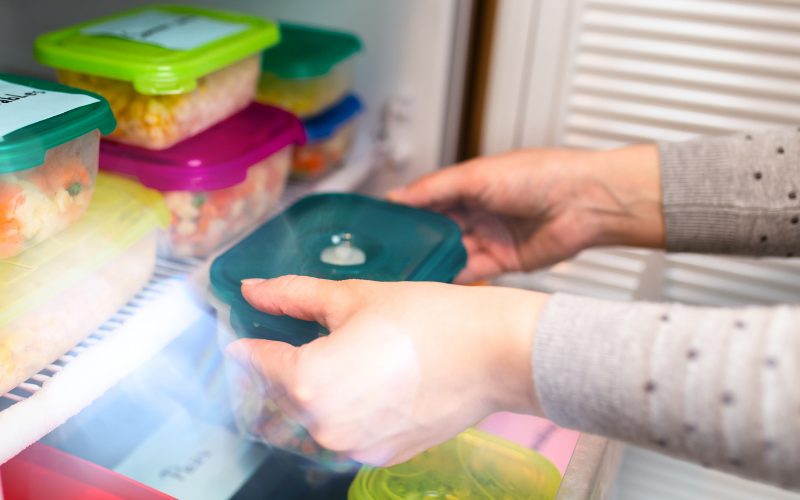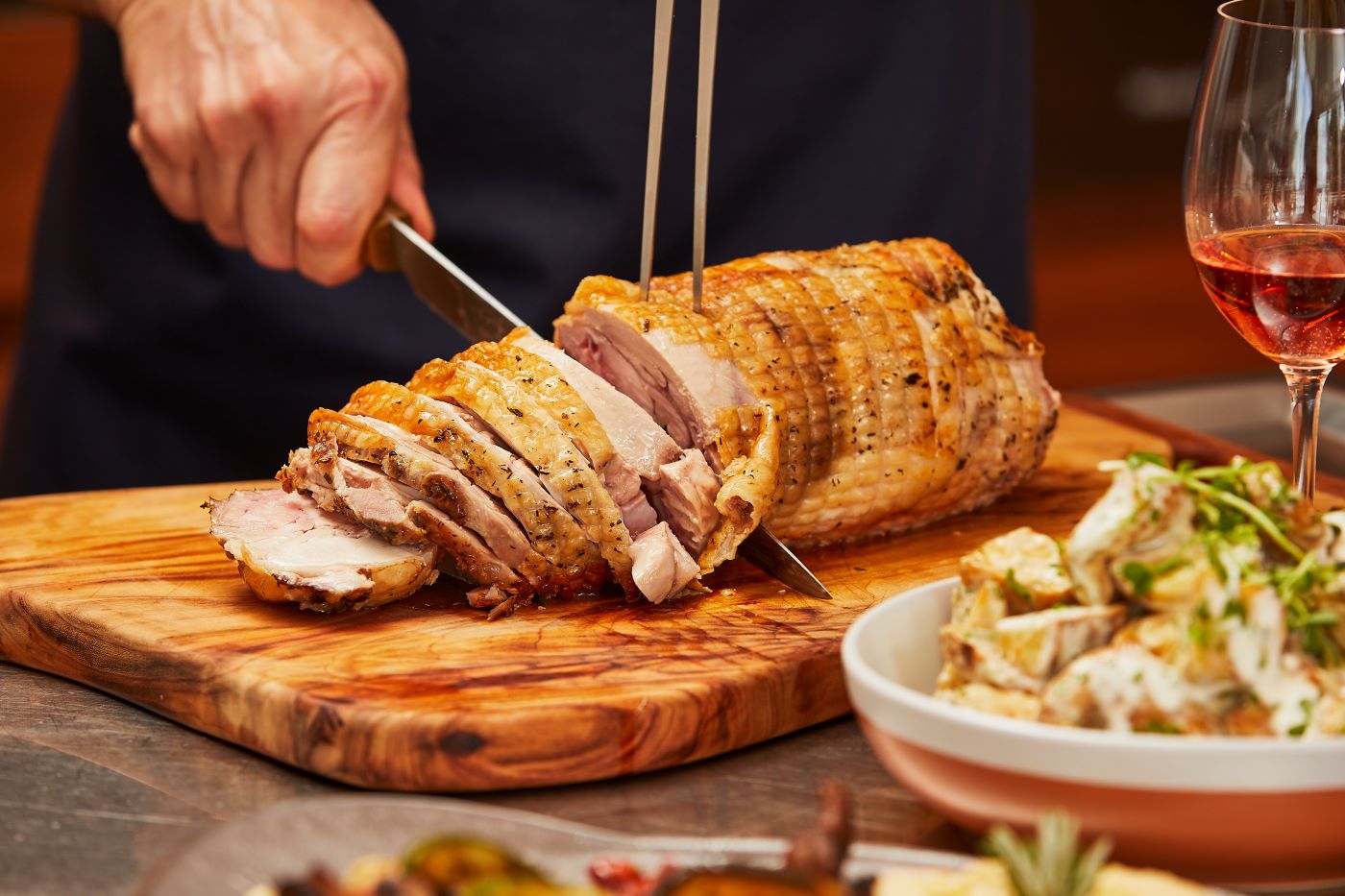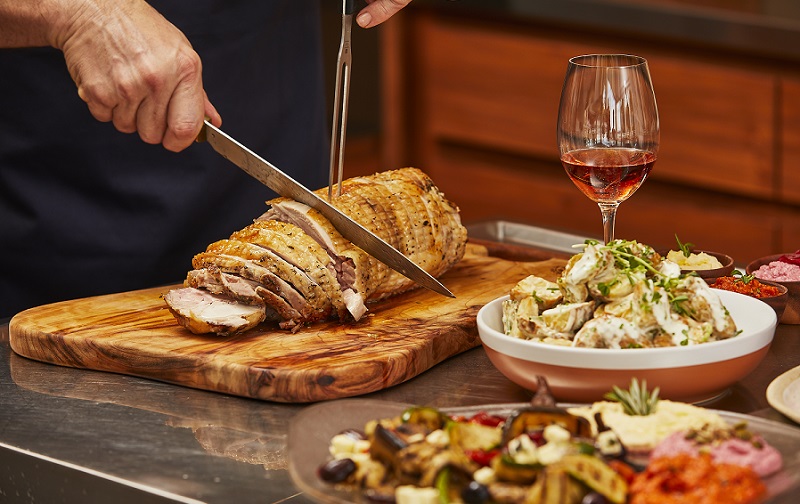Freezing Food: Eat well, save money + help the environment.

Our *trade secrets* revealed!
If you’re looking for ways to be healthier, save time, save money and help the environment, then learning to effectively utilise your freezer is a good step. That’s because, it’s possible to always have a meal to fall back on; so long as you’re accustomed to freezing food portions as you buy or cook. We’ve been making fresh healthy meals and snap freezing them for 25 years so we know a thing or two about freezing meals. In this article we’re sharing our trade secrets with you!
In this handy guide to freezing foods and freezing meals well, you’ll learn how you can help prevent food waste; which foods freeze well and which ones don’t; how to package foods properly so they survive and thrive in the freezer; and handy tips about utilising your freezer so that you can enjoy many delicious meals quickly and easily.
Put a stop to food waste
Food waste is a big problem in Australia. According to OzHarvest, 20% of groceries purchased end up in the bin, which equates to $3,800 wasted per household each year! Aside from the economic perspective, there’s the environmental one. This food waste ends up in landfill where it releases harmful greenhouse gases. Imagine if we could all covert that waste to tasty healthy meals – how much good would we be doing for the environment and how much money would we save? The great news is that you can make a positive change, using nature’s best preservative – your freezer.
Freezing is one of the best techniques in your kitchen arsenal to fight food waste. That’s because freezing slows down bacterial growth and natural degradation of food to extend shelf life and prevent food ending up in the bin. Can’t eat what’s in your fridge? Freeze it, don’t chuck it. Our commercial kitchens here at Gourmet Dinner Service create near zero food waste as everything we buy gets turned into delicious healthy meals and snap frozen to retain the goodness.
Foods that freeze well (and those not to freeze)
- Lasagne and other meat/tomato pasta dishes
- Soups, stews and curries
- Pies - the pastry will crisp up again in the oven when you reheat.
- Meatballs and burger patties - can be frozen cooked or uncooked.
- Cooked grains – rice, quinoa, barley etc. Slightly undercook, spread on a tray to freeze, then portion and store.
- Cakes – with no icing. Store away sponges and butter cakes and you’ll be ready to celebrate in no time. Just thaw and add fresh made icing.
- Baby purees
- Whole sandwiches - excluding any salad ingredients.
The following foods don’t freeze well – cooked eggs, jellies, yoghurt, un-whipped cream and mayonnaise. Also foods with a high moisture content such as watermelon, oranges and salad ingredients.
Didn’t think you could freeze these, did you?
Avocados – cut in half and freeze in or out of skin. The thawed product will be a bit mushy but fine for use in recipes or as guacamole.
Bananas – in or out of skin is fine. The defrosted fruit are great in banana breads or smoothies.
Eggs – not in the shell though! Whisk gently or separate and freeze. Don’t use the frozen eggs to make meringue as they won’t whip well but good for all other uses.
Herbs – your lovely home herb garden has overproduced. Don’t throw it away! Chop, place in ice cube trays and cover with water. Once frozen, bag them up and use one cube at a time in recipes.
Nuts – will last so much longer as freezing prevents the oils from going rancid too quickly. You can eat them straight from the cold or use in recipes.
How to avoid freezer burn
Freezer burn is ‘that frozen taste’ and often means a tough texture too. It’s unpleasant and likely to have you throwing away the food that you were trying to save from waste. It can occur if food is improperly packed for the freezer or stays in there too long.
The key to freezing well is to avoid trapped air and ambient moisture as these will cause deterioration of your product. To prevent freezer burn, get your fresh food into the freezer quickly, use air tight bags or containers (ideally where you can squeeze out excess air) and always seal well.
Which containers to use
Zip lock bags are great for freezing equipment as you can easily remove the air before sealing. Lay bags flat until frozen, then stack. They can also be manoeuvred to fit flexibly around the space you have.
Thick foil or several layers of cling wrap is also useful to protect frozen food. Even better, use both – plastic wrap first with foil on top. Think of it as protection from the cold, in the same way you’d wear a Winter coat. A single plastic wrap layer will likely lead to freezer burn quite quickly.
Freezer proof glass containers are good too. These offer better stacking ability and can hold liquids and soups well. Try to fill the containers to nearly full (leaving room for expansion), as this will limit any air inside.
The jury’s still out on plastic containers. Certainly some plastics are unsafe due to deterioration at cold temperatures which causes the leaching of chemicals into the food when thawed. Other plastics are marketed as freezer safe.
8 tips for safe freezing and thawing
- Don’t freeze something that is still hot. This is because condensation will form inside the pack and this is not good for the quality of the frozen item. The best approach is to cool your dish quickly to room temperature then cover and freeze. You can use the fridge for cooling.
- Another reason not to put hot foods straight into the freezer is that it raises the temperature of the freezer, potentially jeopardising the integrity of the other frozen contents. Many freezers have a quick freeze function, ideal to use when you place your pre-cooled items in. Alternatively, turn down the temperature several hours before you intend to freeze a batch of food, then put it back up the next day.
- To thaw safely, overnight in the fridge is the ideal option but it does take time. A quicker method is to place under cold running water or in a cool water bath, with the item protected in plastic. The fastest option is to defrost in the microwave.
- Once thawed, avoid refreezing any items, most particularly raw meat and fish. The exception is if you cook it again completely. For example, it’s ok to defrost raw burger patties, cook them for dinner and freeze any cooked leftovers.
- Cooking straight from frozen is possible on some items, such as soups and saucy meals. Pop them in the oven or a pan on the hotplate on gentle heat. Frozen pies and other baked goods can also be placed straight into the oven, covered with foil to prevent the exterior burning.
- Common shelf life of frozen goods is three to six months. Foods containing fresh dairy, lightly cooked eggs or fish should ideally be used within a month. Also use anything that is poorly packed and not properly air tight within a month to avoid freezer burn.
- Don’t rely on your memory of either what you’ve frozen or when. Labelling effectively is very important for your health and safety, as well as the taste of the food.
- Did you know that your freezer works more efficiently if full? Note that it’s the opposite for your fridge! Caring for your freezer will help it last longer. That means, no whacking to remove ice, no defrosting with a hairdryer, and keep the door closed in the event of a power cut (the food will keep for up to 24 hours).
If you’re not much of a cook or food prepper, then you can still eat well, save money and help the environment by preventing food waste – just order meals for one, mains for two, or family meals from Gourmet Dinner Service for all the benefits!











